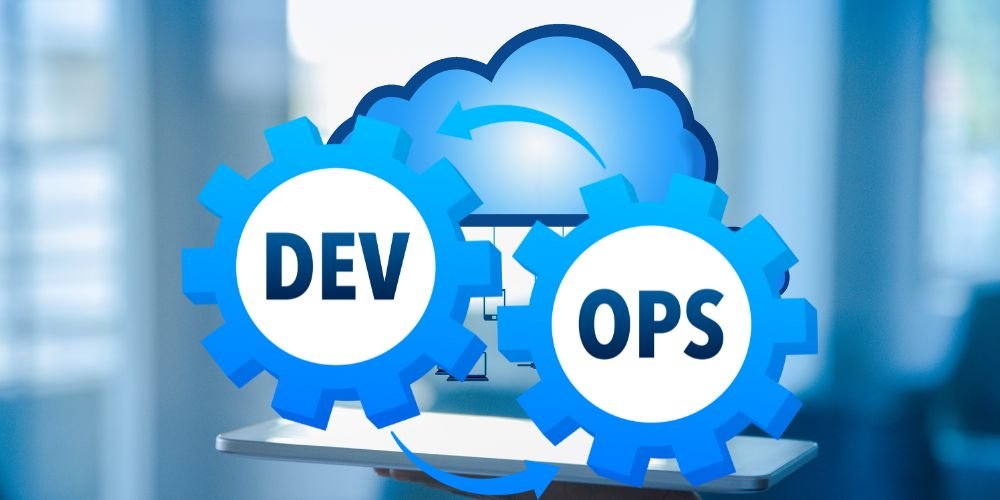In today’s fast-paced digital landscape, organizations are constantly pressured to deliver software quickly while maintaining high-security standards. Cloud DevSecOps, an evolution of DevOps practices, integrates security into every phase of the software development lifecycle (SDLC) within cloud environments. In this article, we explore the significance, principles, and benefits of Cloud DevSecOps, explaining how it promotes a security-first mindset and enables organizations to achieve rapid innovation without compromising security.
Understanding Cloud DevSecOps
Cloud DevSecOps combines Development (Dev), Operations (Ops), and Security (Sec) practices into a cohesive framework that prioritizes security throughout the software development and deployment process. It extends the principles of DevOps by integrating security controls, automation, and continuous monitoring into every stage of the SDLC, from code creation to production deployment, within cloud-native environments.
Shift-Left Security
Cloud DevSecOps emphasizes “shift-left” security, where security considerations are integrated early in the SDLC, starting from the planning and design phases. By embedding security practices into development workflows, developers can identify and mitigate security vulnerabilities and compliance risks before they escalate into costly issues later in the development lifecycle, reducing the time and effort required for remediation.
Automated Security Testing
Cloud DevSecOps leverages automation to streamline security testing processes and ensure consistent security posture across cloud environments. Automated security testing tools such as static application security testing (SAST), dynamic application security testing (DAST), and container image scanning enable organizations to identify and remediate vulnerabilities in code, configurations, and dependencies automatically, facilitating rapid feedback and continuous improvement.
Infrastructure as Code (IaC) Security
Cloud DevSecOps promotes the use of Infrastructure as Code (IaC) principles to define and manage cloud infrastructure and configurations programmatically. By treating infrastructure configurations as code, organizations can consistently apply security controls, compliance policies, and best practices across cloud environments, reducing the risk of misconfigurations, drift, and unauthorized changes that could expose systems to security threats or compliance violations.
Advantages of Cloud DevSecOps
Cloud DevSecOps offers several advantages over traditional software development and security practices, enabling organizations to achieve faster time-to-market, improved security posture, and enhanced compliance with regulatory requirements. These advantages include proactive risk mitigation, continuous compliance, rapid response to security incidents, and increased collaboration between development, operations, and security teams.
Proactive Risk Mitigation
Cloud DevSecOps enables organizations to proactively identify and mitigate security risks throughout the SDLC, reducing the likelihood of security breaches and data exposures in production environments. By integrating security controls and automated testing into development pipelines, organizations can detect and remediate vulnerabilities early in the development process, thereby minimizing the attack surface and strengthening their overall security posture.
Continuous Compliance
Cloud DevSecOps facilitates continuous compliance with regulatory requirements and industry standards by incorporating security and compliance checks into automated workflows. Organizations can enforce security policies, audit trails, and access controls consistently across cloud environments, ensuring adherence to regulations such as GDPR, HIPAA, PCI DSS, and SOC 2 throughout the software development lifecycle.
Rapid Response to Security Incidents
Cloud DevSecOps enables organizations to respond rapidly to security incidents and vulnerabilities through automated incident detection, analysis, and remediation. By integrating security monitoring, logging, and incident response capabilities into their development pipelines, organizations can detect and respond to security threats in real-time, minimizing the impact of breaches and reducing the time to remediation.
Increased Collaboration and Transparency
Cloud DevSecOps promotes increased collaboration and transparency among development, operations, and security teams by breaking down silos and fostering a shared responsibility for security outcomes. Organizations can improve communication, collaboration, and accountability by aligning goals, workflows, and metrics across cross-functional teams, driving greater efficiency and effectiveness in delivering secure, high-quality software products.
Implementation Considerations
When implementing Cloud DevSecOps practices, organizations should consider several factors to ensure successful adoption and integration within their software development processes and cloud environments. These considerations include cultural transformation, tooling selection, skill development, and compliance requirements.
Cultural Transformation
Cultural transformation is essential for successfully adopting Cloud DevSecOps practices, as it requires a shift in mindset, attitudes, and behaviors toward security within the organization. Organizations should foster a culture of collaboration, experimentation, and continuous improvement, where developers, operations, and security teams work together towards common goals and shared outcomes.
Tooling Selection
Tooling selection is critical for effectively implementing Cloud DevSecOps practices, as it determines the capabilities and features available for integrating security controls and automation into development workflows. Organizations should evaluate and select tools that align with their specific security requirements, development methodologies, and cloud platforms, taking into account integration capabilities, scalability, and vendor support.
Skill Development
Skill development is essential for building and maintaining expertise in Cloud DevSecOps practices, as it requires proficiency in both development and security domains. Organizations should invest in training, certification, and knowledge-sharing initiatives to empower developers, operations engineers, and security professionals with the skills and knowledge to implement best practices, automate security tasks, and respond effectively to security incidents.
Compliance Requirements
Compliance requirements significantly shape Cloud DevSecOps practices, as organizations must align security controls and processes with regulatory mandates and industry standards. Organizations should conduct regular assessments and audits to ensure compliance with relevant regulations such as GDPR, HIPAA, PCI DSS, and SOC 2 and incorporate compliance checks and controls into automated workflows to maintain continuous compliance throughout the SDLC.
Conclusion
Cloud DevSecOps represents a paradigm shift in software development and security, enabling organizations to achieve rapid innovation, enhanced security, and continuous compliance within cloud environments. By integrating security into every phase of the SDLC, from planning and coding to deployment and operations, DevSecOps fosters a culture of security-first mindset and collaboration, driving greater efficiency, agility, and resilience in delivering software products and services. As organizations continue to embrace digital transformation initiatives and adopt cloud-native technologies, Cloud DevSecOps will remain a cornerstone of software development and security strategies, empowering organizations to innovate confidently in the digital era.










